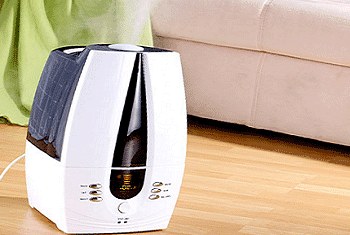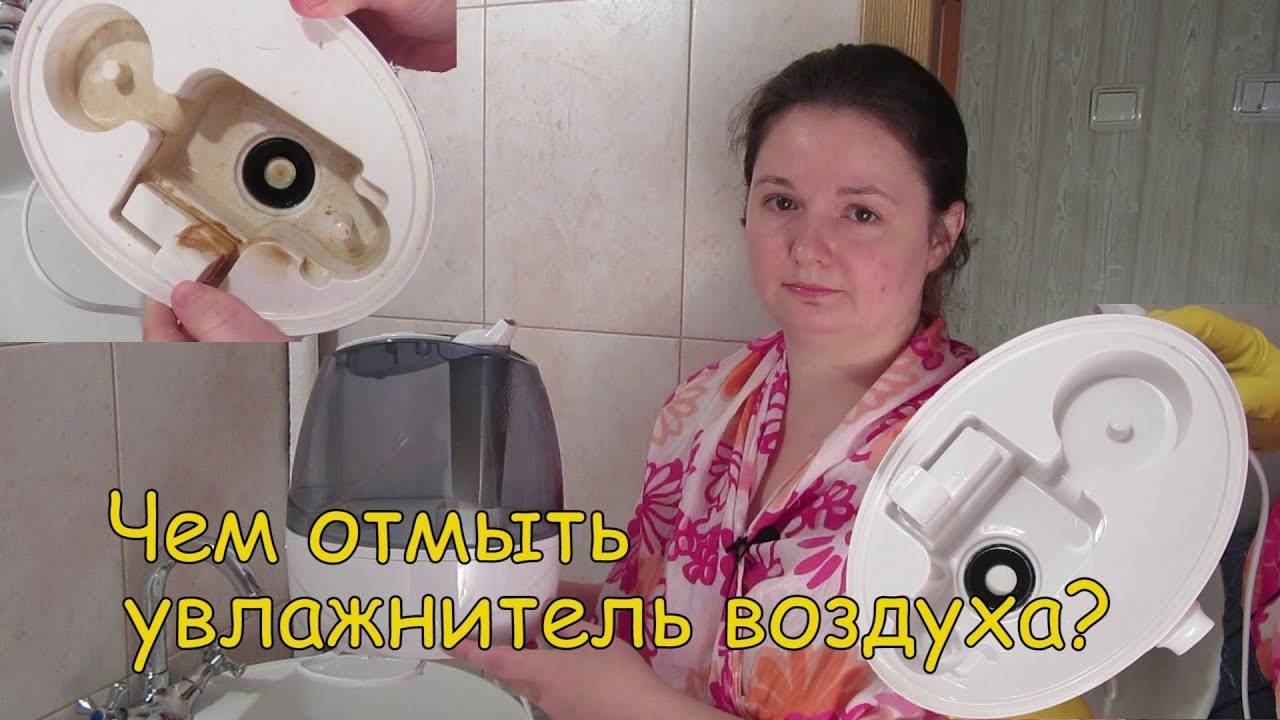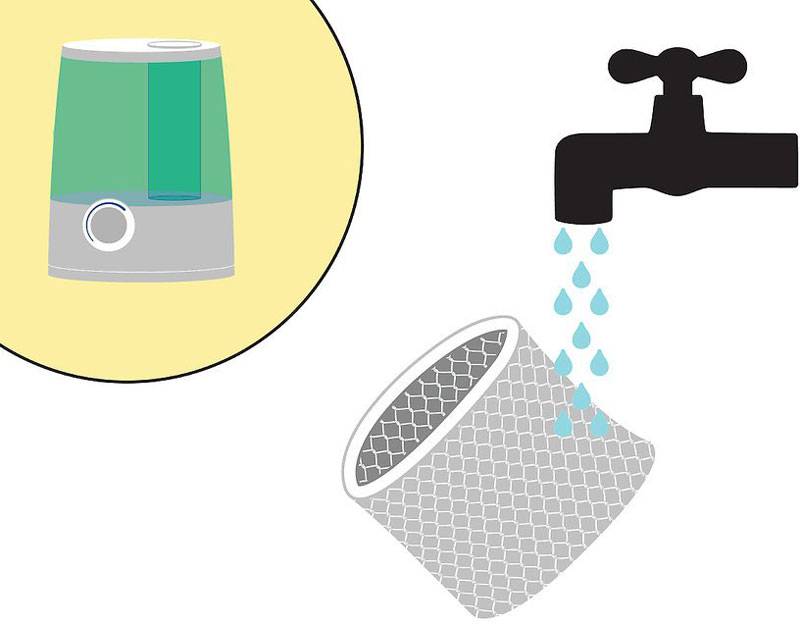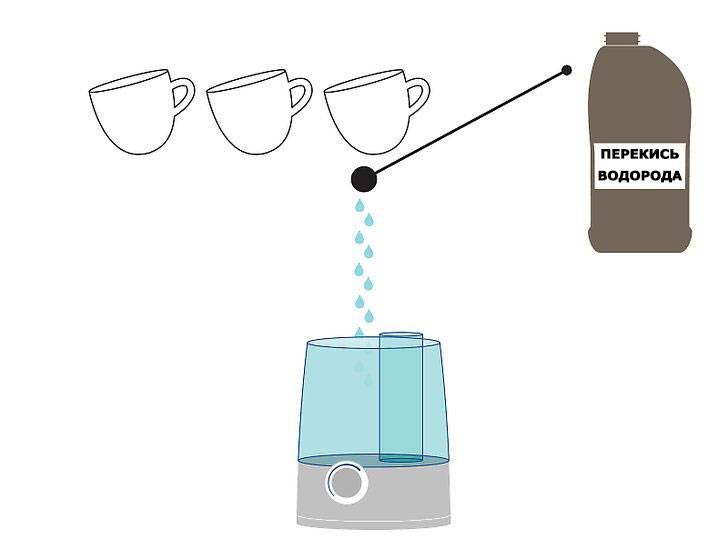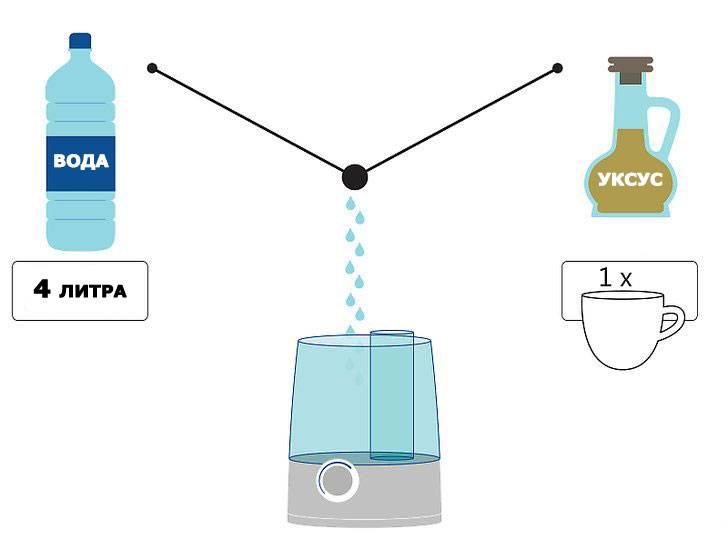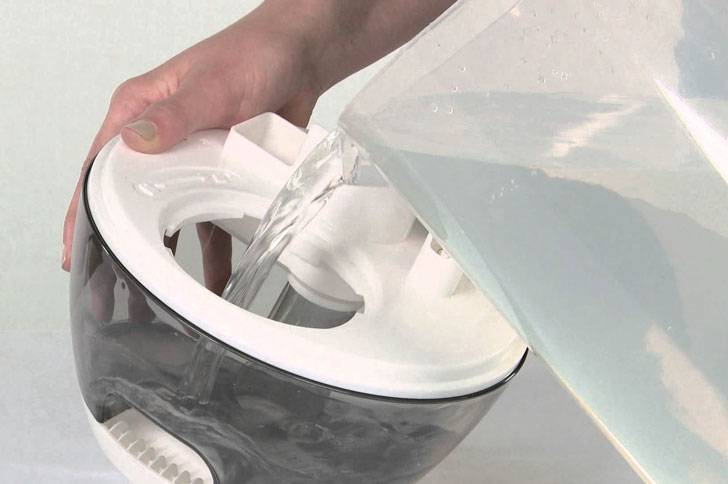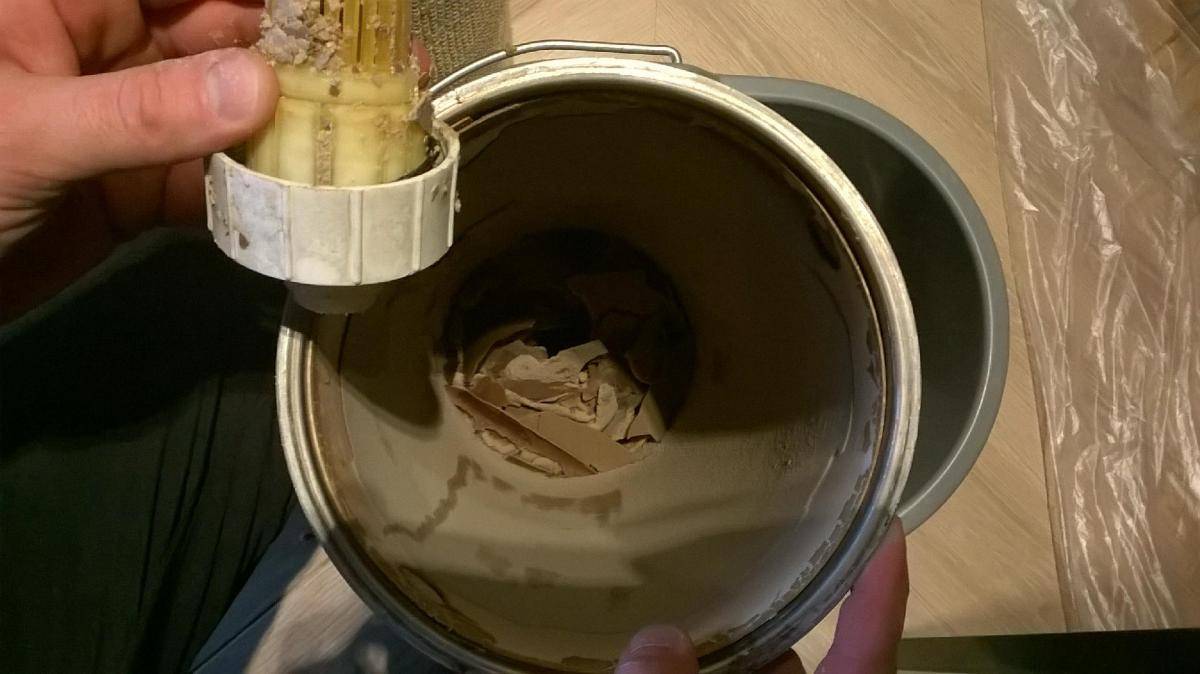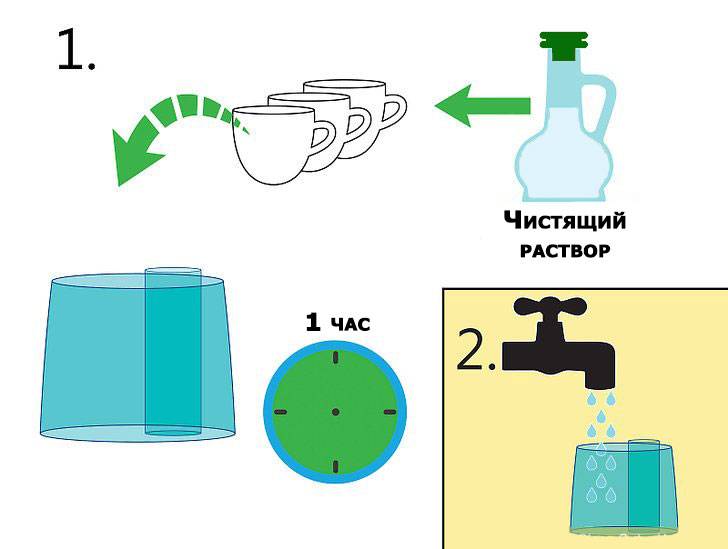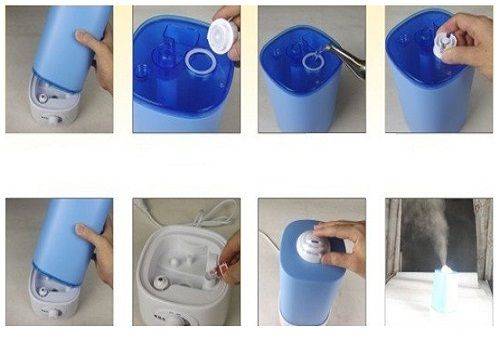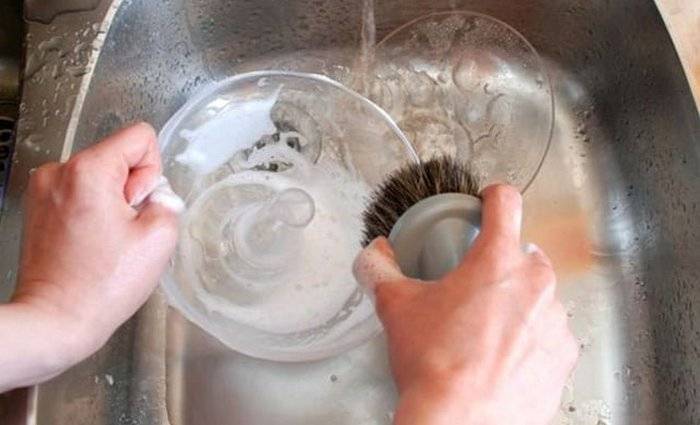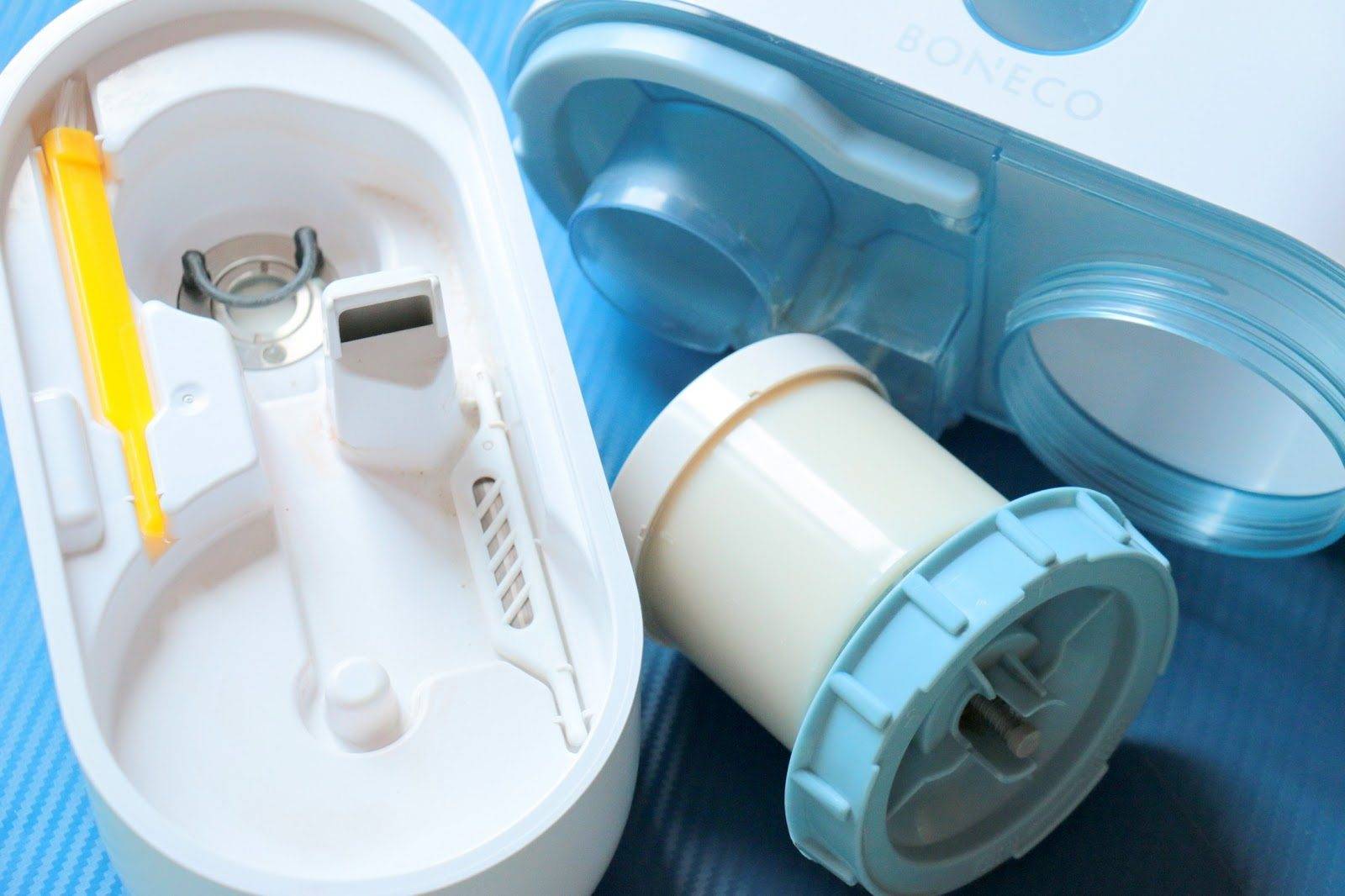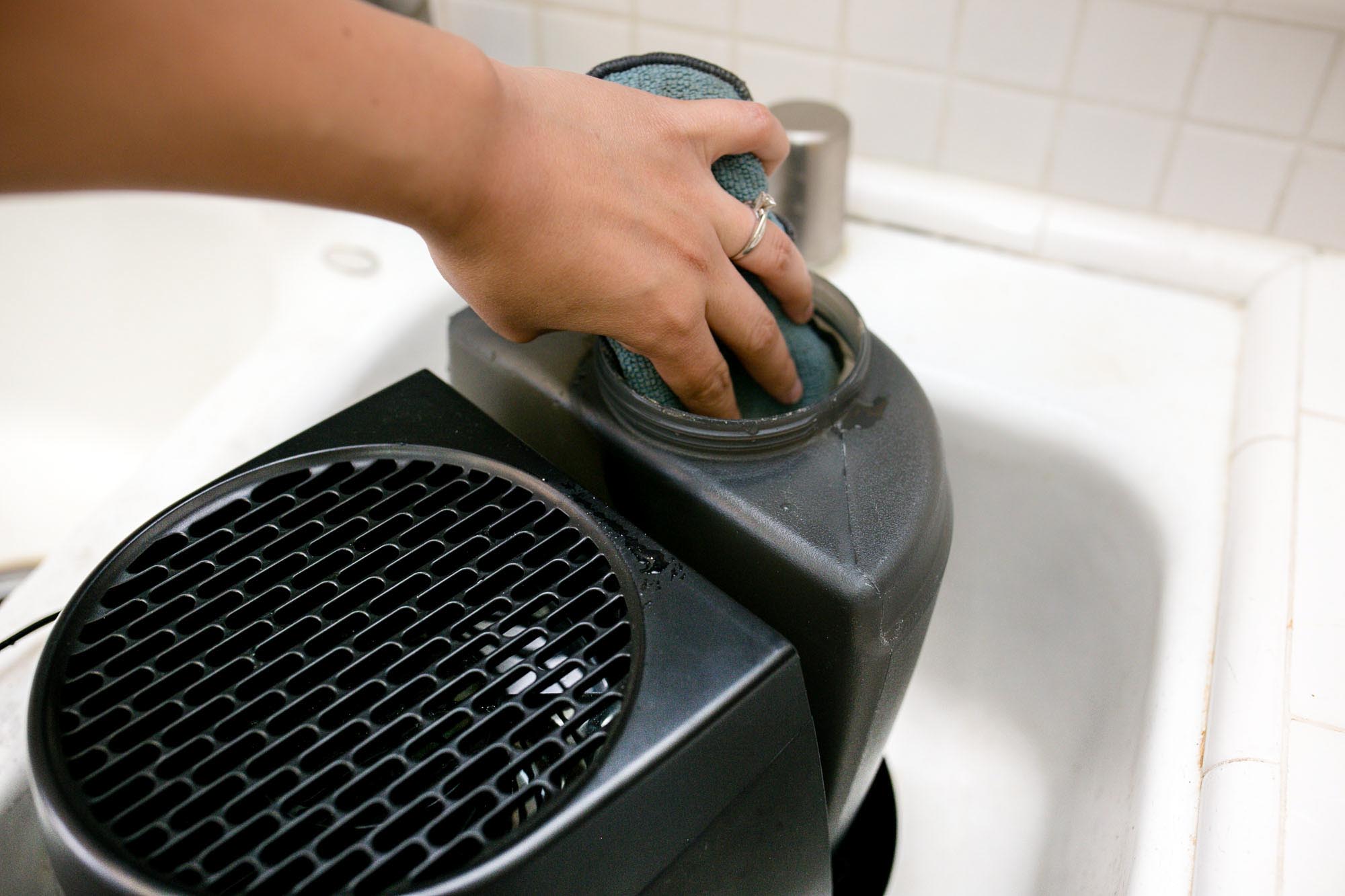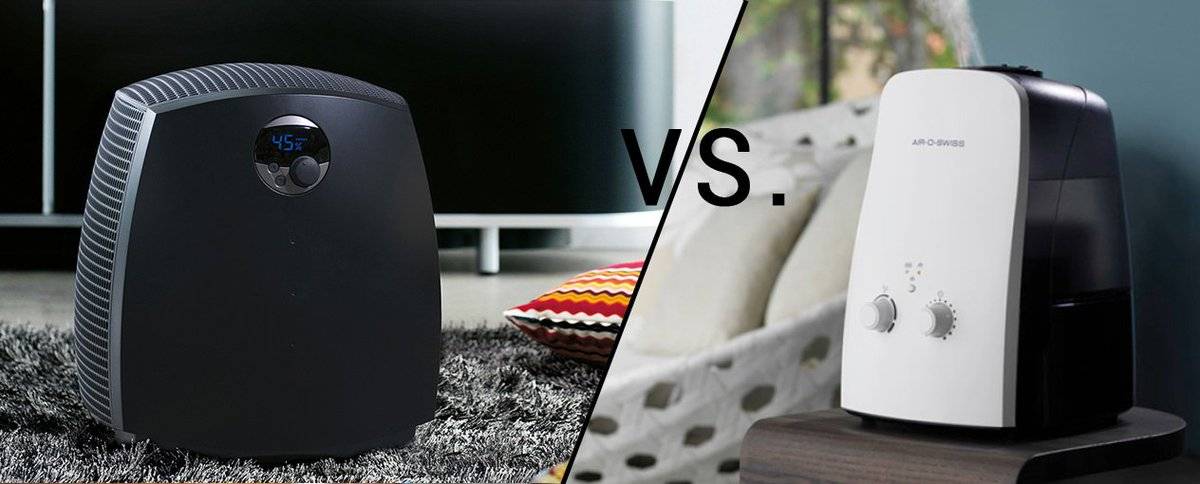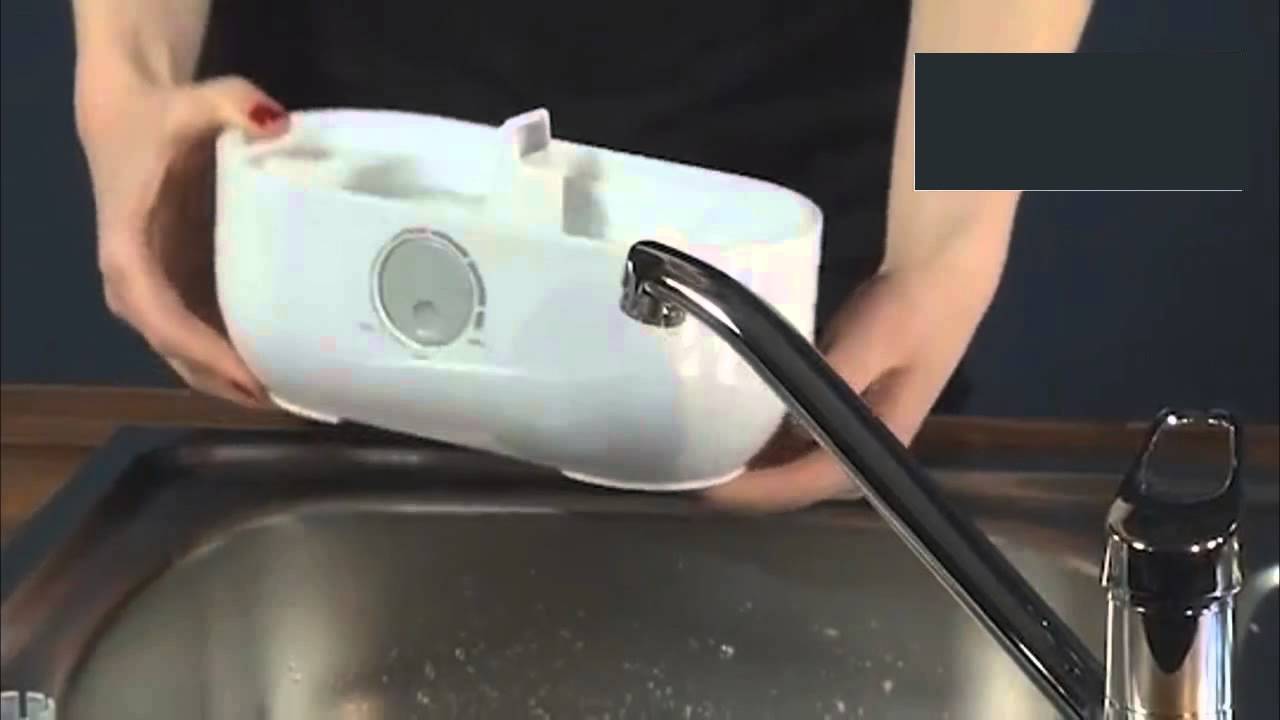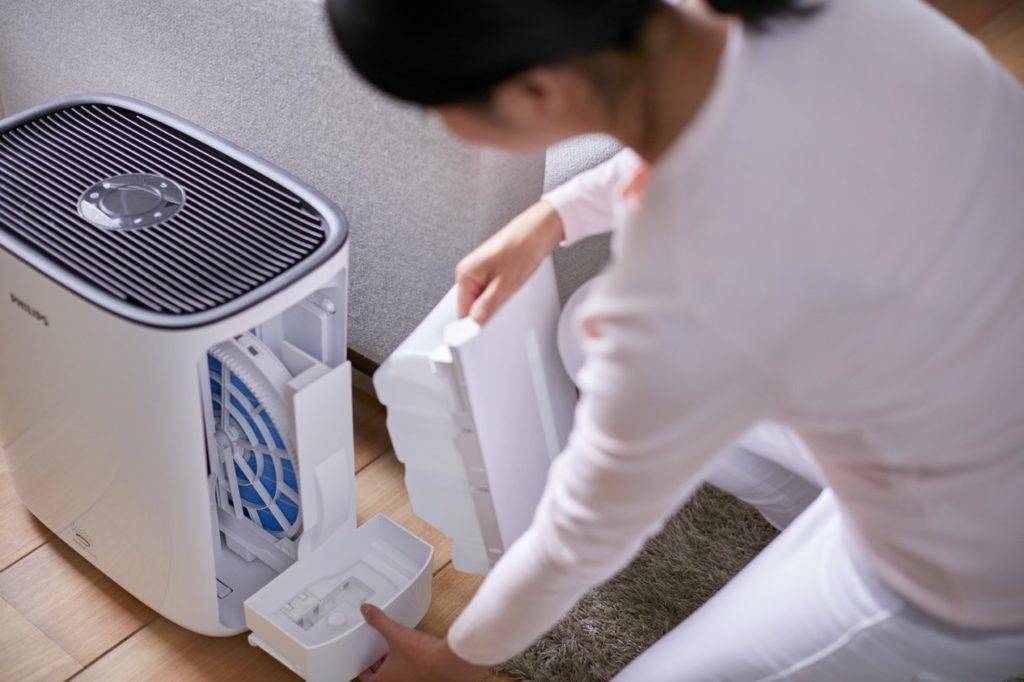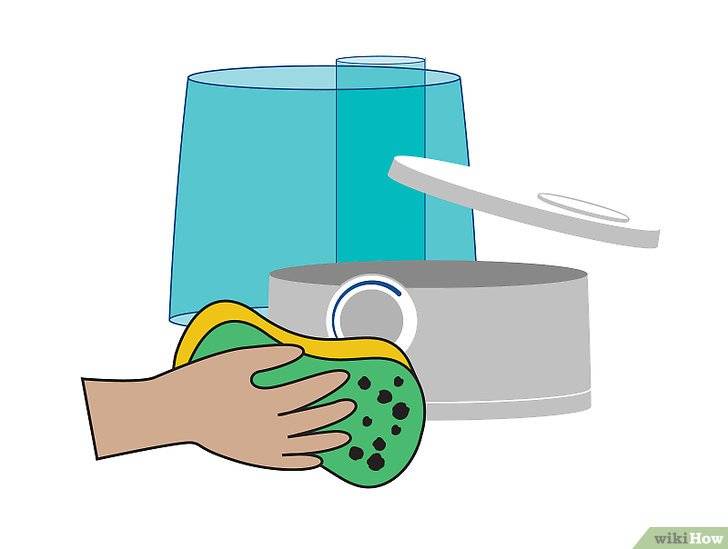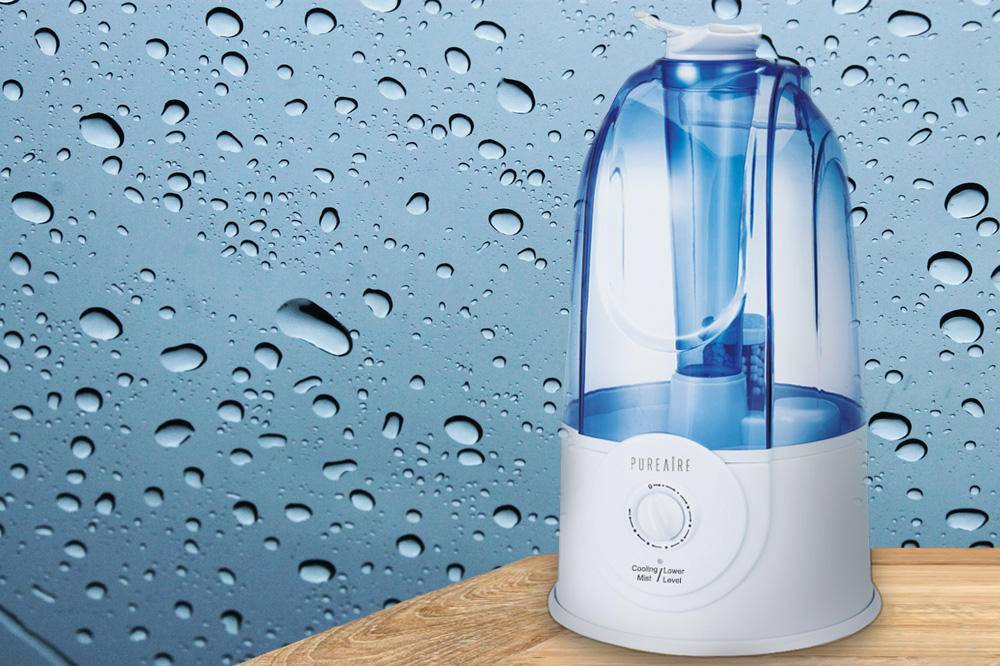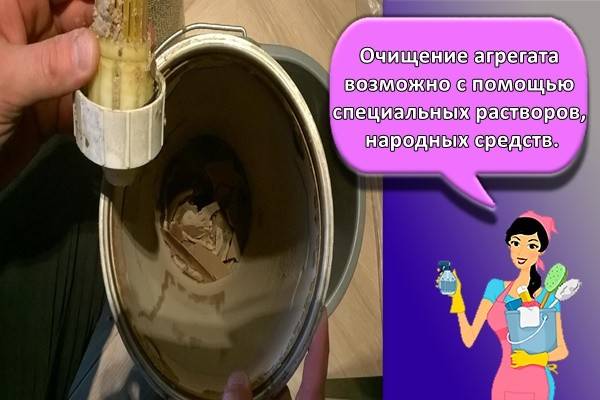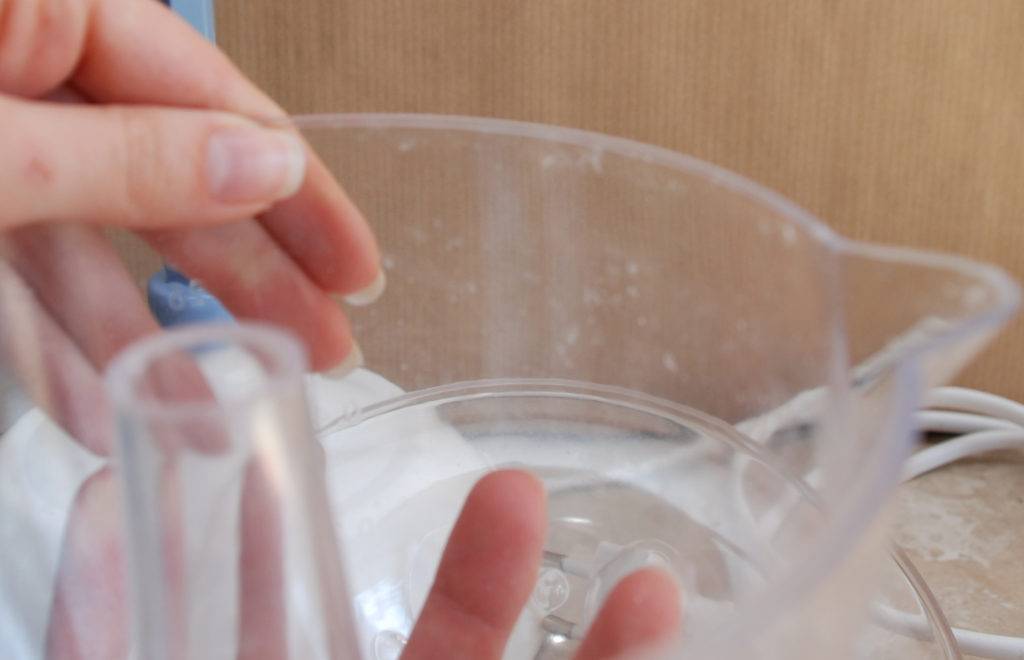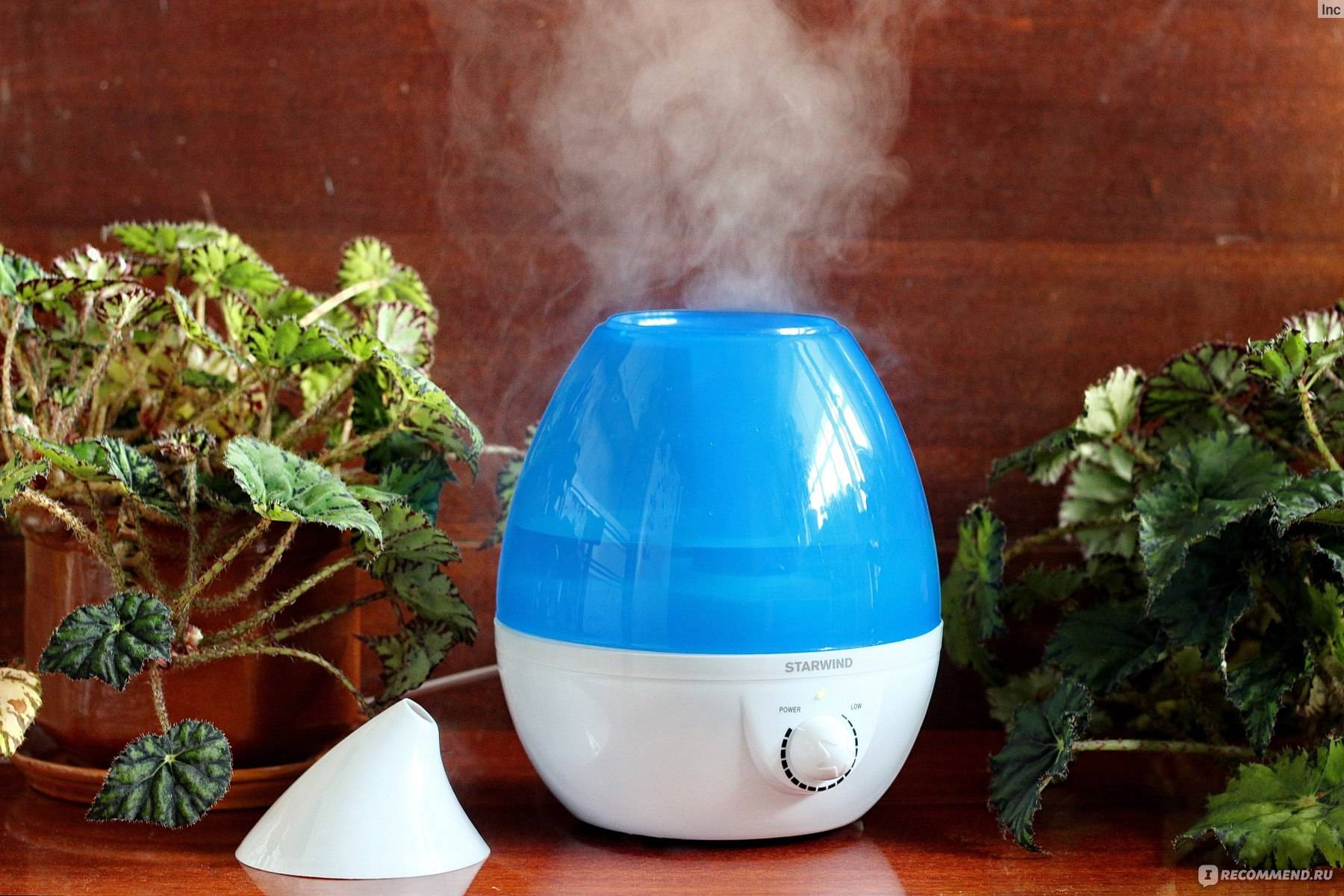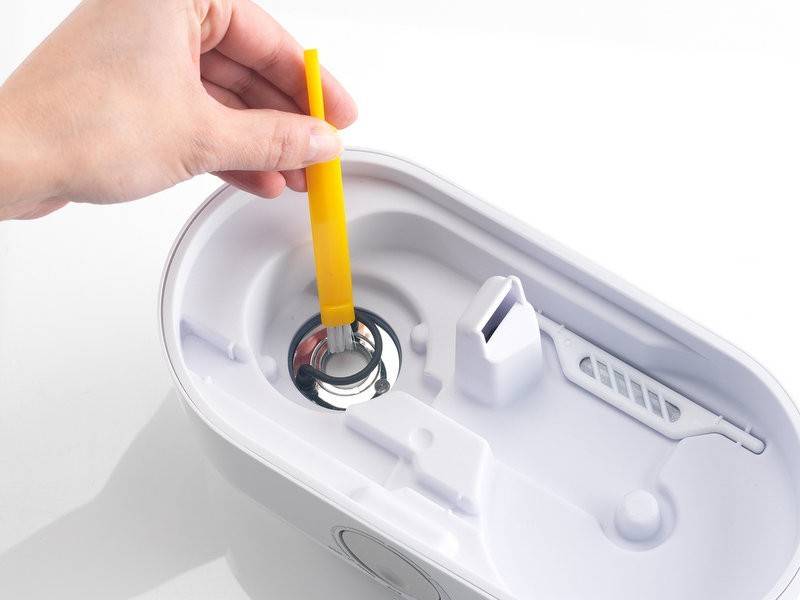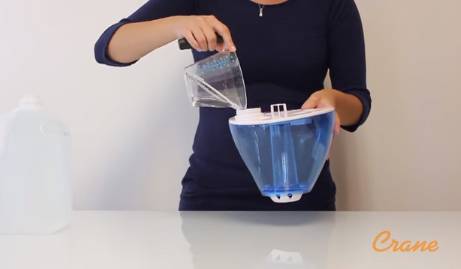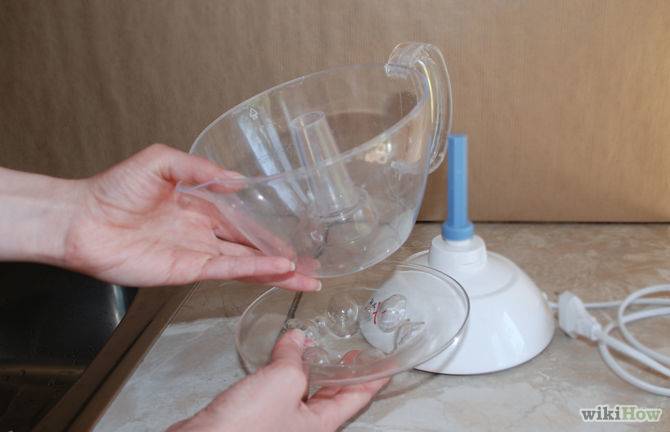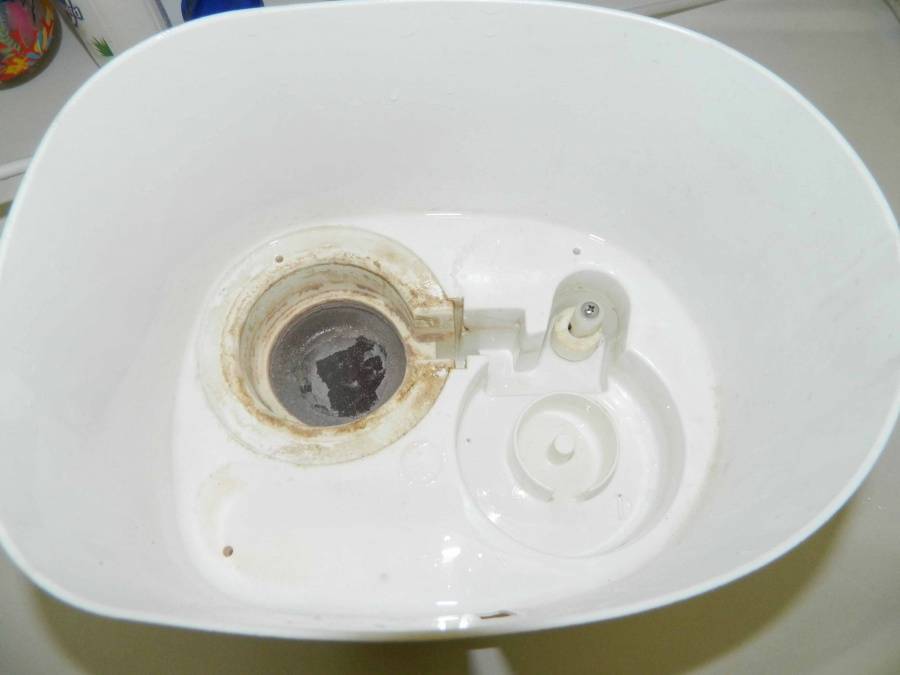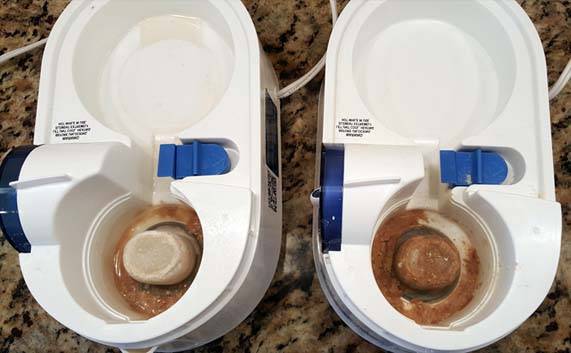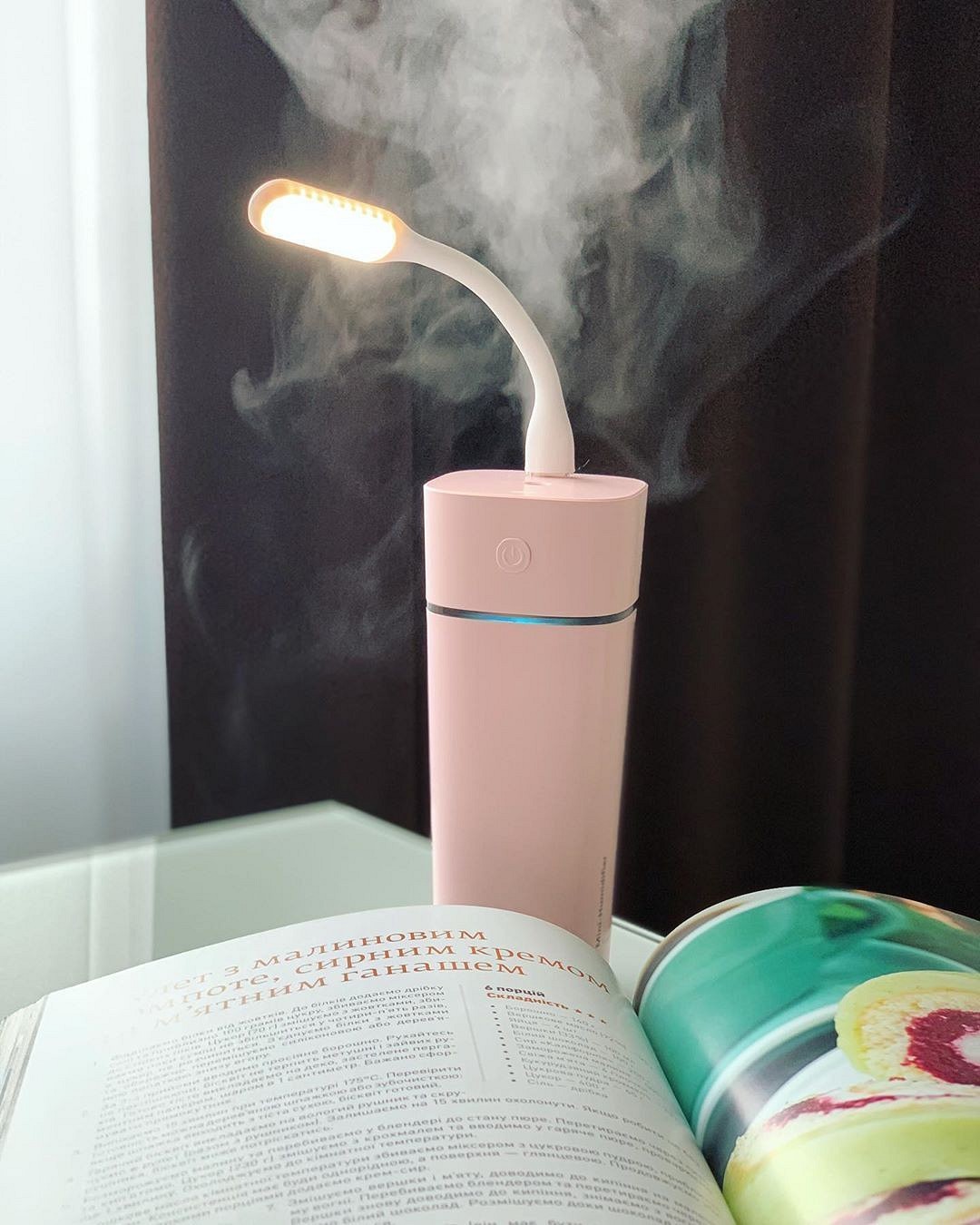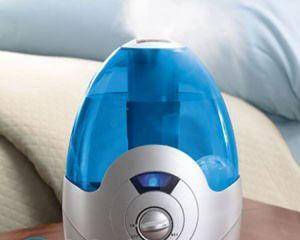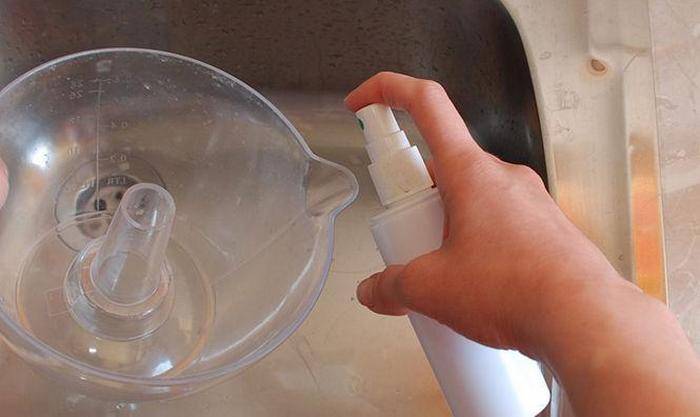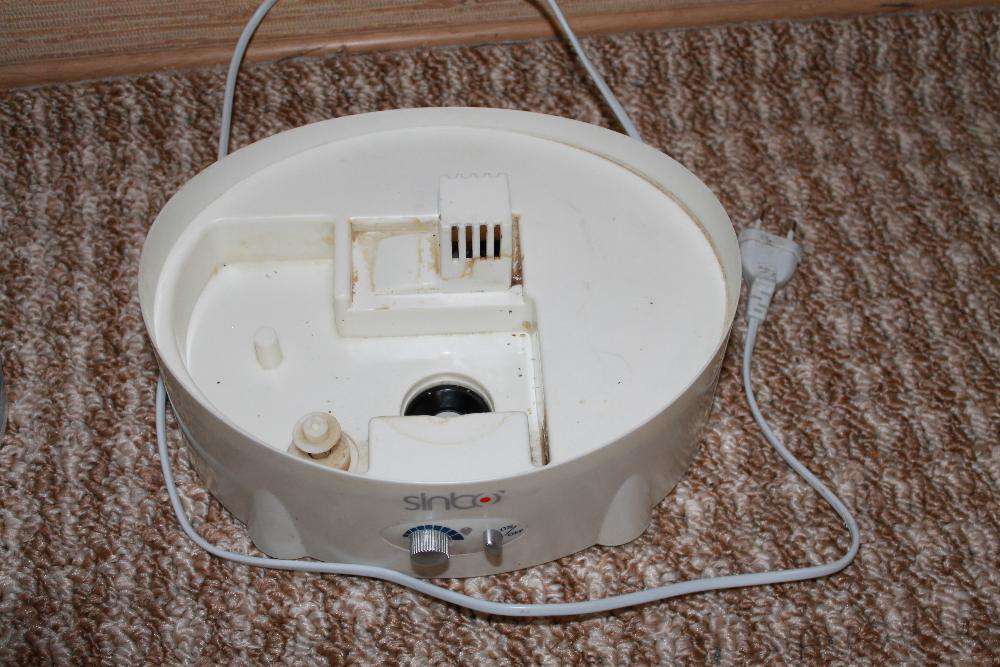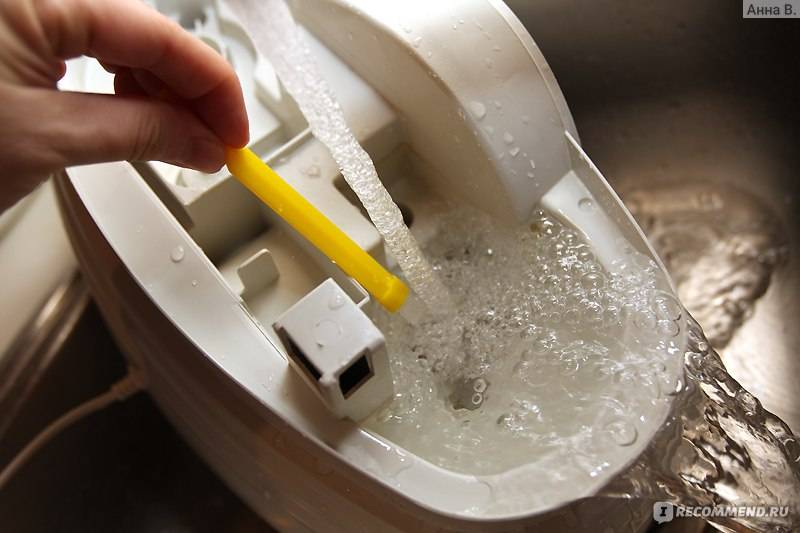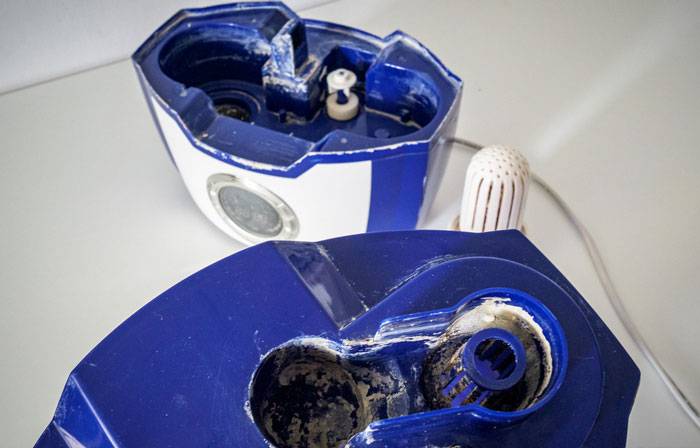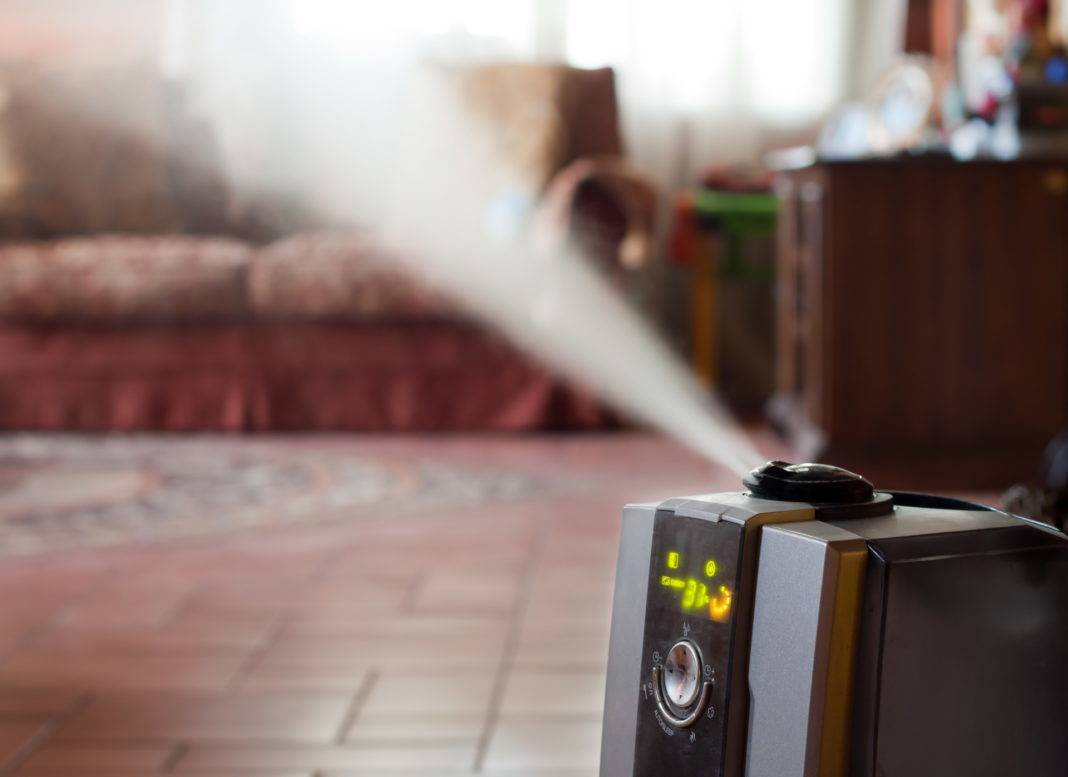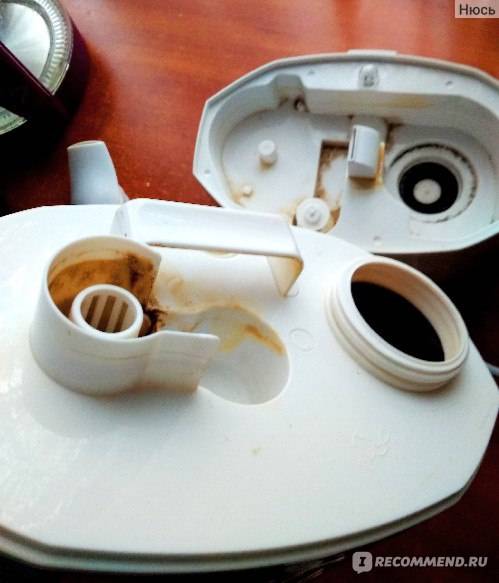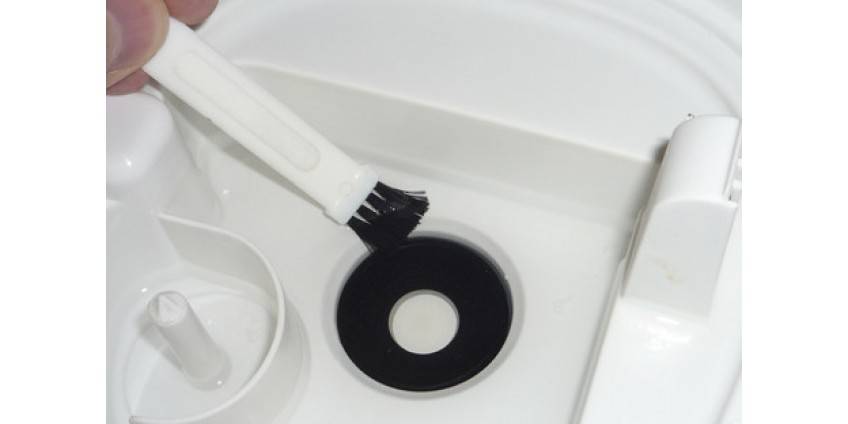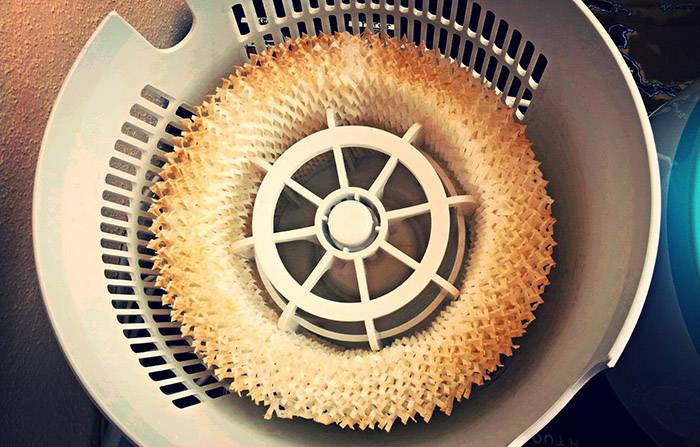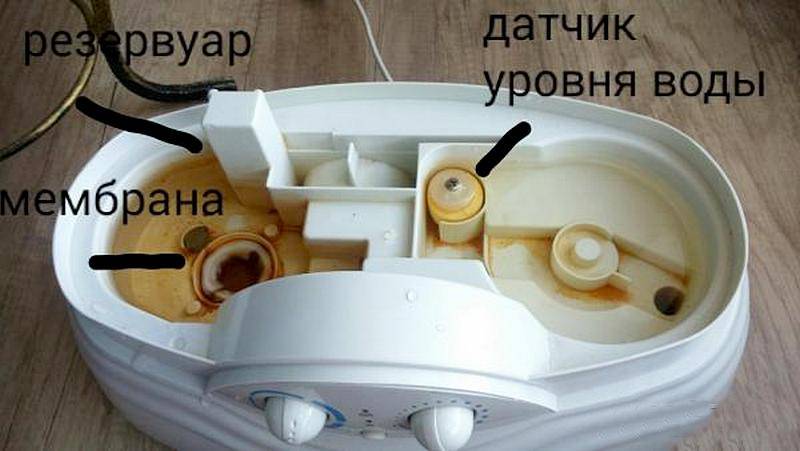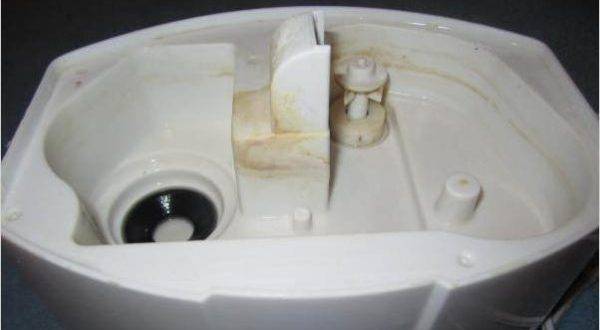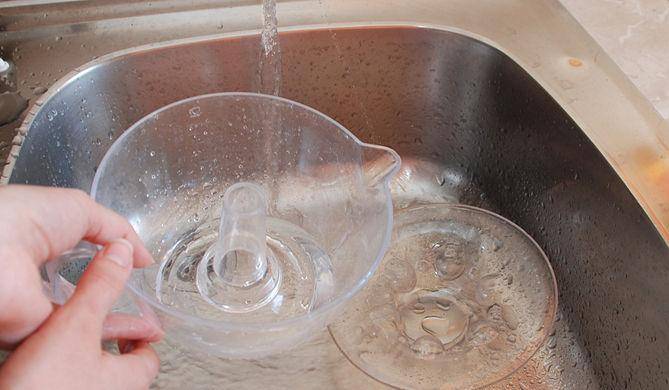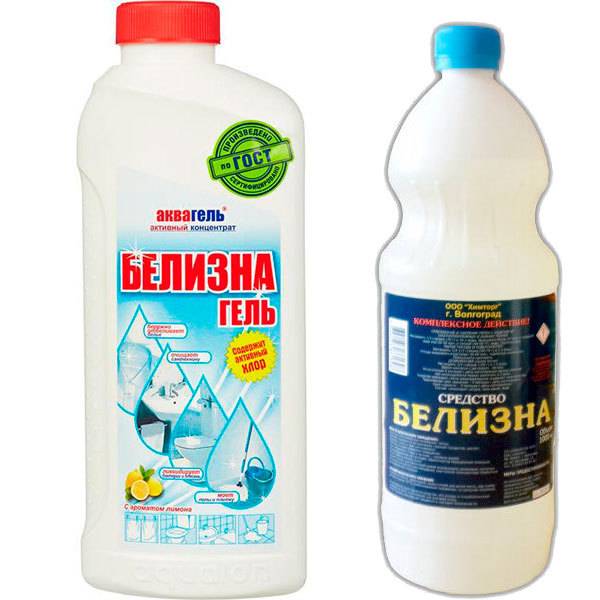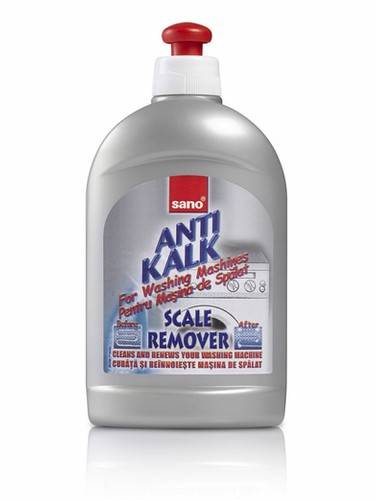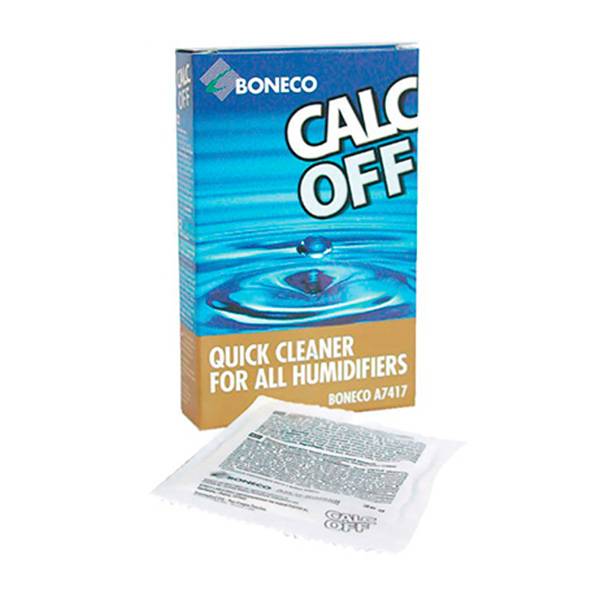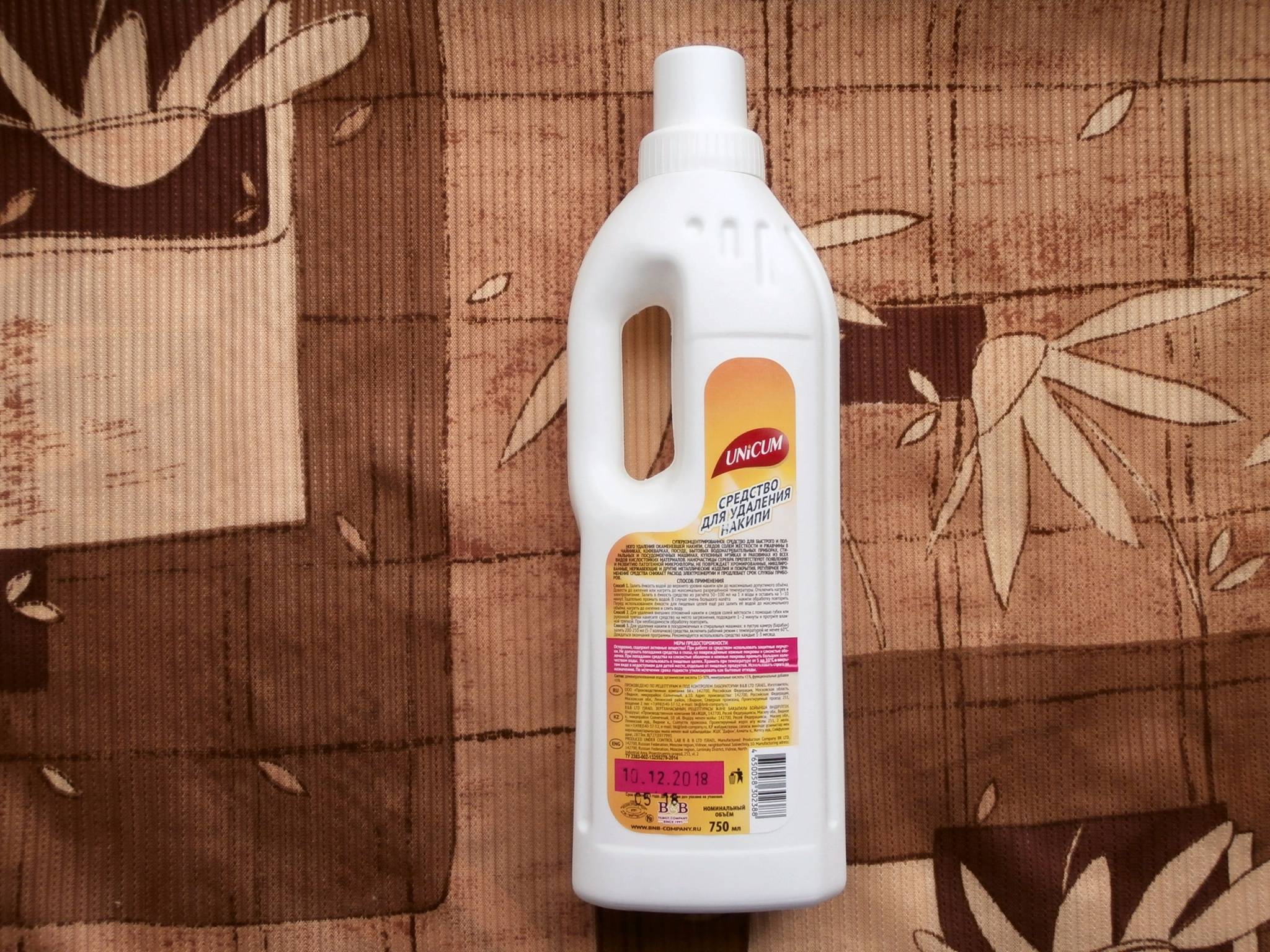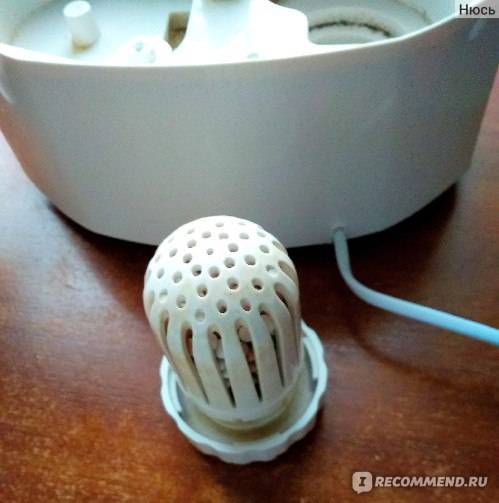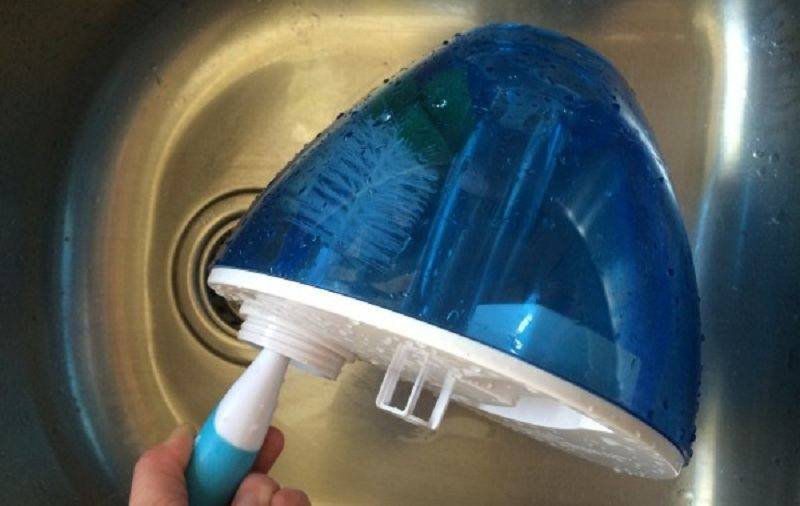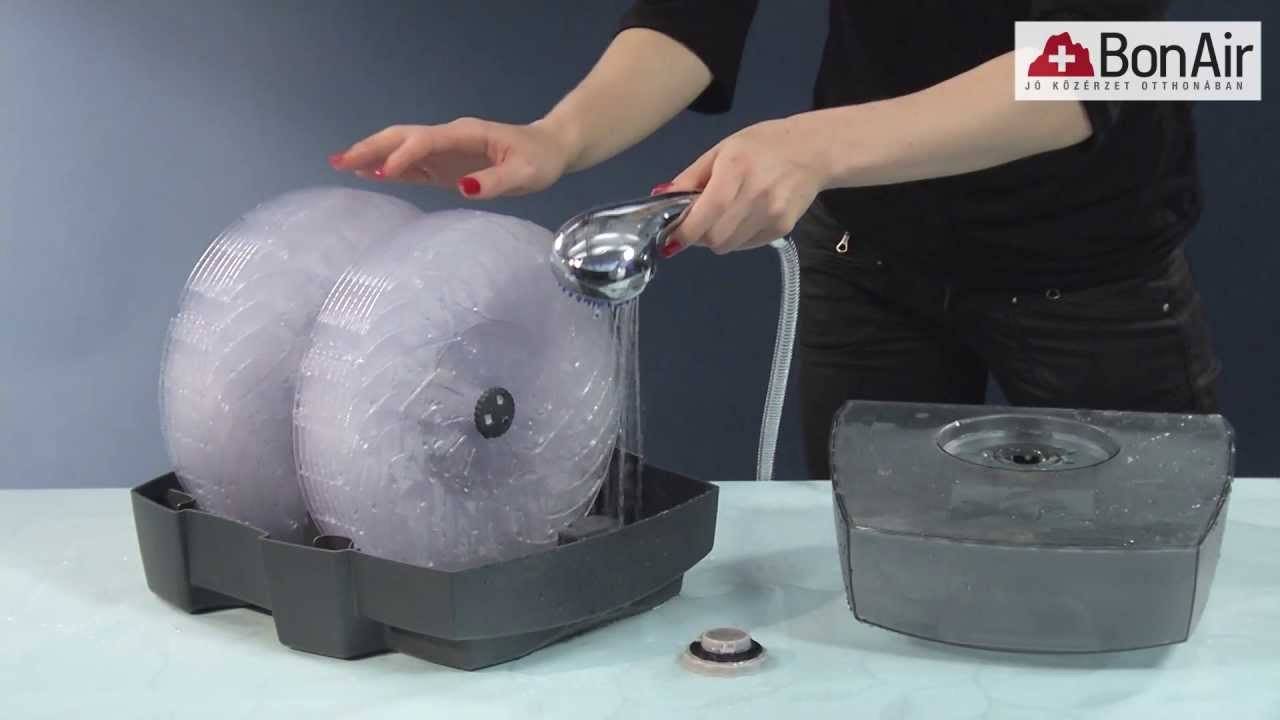3 How to clean a humidifier - disinfection
It is important not only to remove plaque inside the apparatus, but also to destroy bacteria that cause rot. If this is not done in a timely manner, they will enter the air, and then into the lungs.
- Hydrogen peroxide. A good disinfectant and safe agent is hydrogen peroxide. Fill the water container with a 3% solution of the product. Leave it to act for an hour, then wash it under running water. This solution will remove mold and mildew if they have already formed on the walls. Even if particles of peroxide remain on the walls of the tank, they will easily decompose into oxygen and water.
- Table vinegar. The cleaning procedure with such a tool should be carried out only in an open place, preferably outdoors. Pour a glass of vinegar into the tank, fill the rest of the place with water. Turn the humidifier on at its highest level and let it run until the liquid is completely used up. Then disassemble the device and wash it in warm water.
- Lemon. Instead of vinegar, use a more natural ingredient, but just as effective - lemon juice.
- Descaling agents. A descaler will help to wash the humidifier from whitish deposits and remove a thick layer of it. It is used to clean electric kettles and is safe for the body. But this does not mean that after it you do not need to thoroughly wash the tray.

Self cleaning humidifier at home
This is a fairly straightforward procedure. If the device is used actively, it is recommended to wipe it once every 7 days. In this case, it is necessary to remove all deposits that have accumulated on its surface. Before cleaning the product, all the liquid from the container is drained from it, and this part itself is washed in running water. Then it is recommended to dry it well, but you should not use direct sunlight.
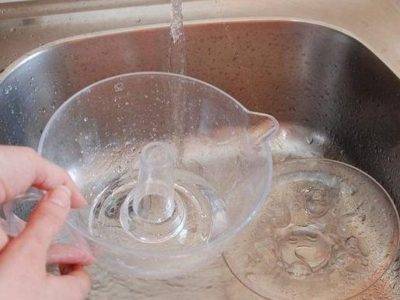
Do not use various detergent powders, shampoos or gels when cleaning the humidifier, as after cleaning the device with these agents, they can spread throughout the room in the form of microscopic particles. This can cause various types of skin or respiratory allergies and severe headaches in all family members.
If the contamination inside the humidifier is difficult to eliminate, then it is recommended to use special liquids for these purposes, which are indicated by the manufacturer in the product passport. You can also use compounds for cleaning an electric kettle or citric acid.
It is possible to remove scale and lime deposits in the appliance by using baking soda, but this only helps if the humidifier is slightly dirty.
If the scale has hardened strongly, then you will have to use special chemical compounds, which is extremely undesirable, or clean the parts of the device with a metal mesh. However, such a mechanical method can damage the body of the device, so it is necessary to regularly clean the device so that no hardened scale appears on it.
The nozzle of the device must be well cleaned of deposits, but abrasives must not be used, as this will damage the part and the need to completely replace it. Manufacturers recommend special solutions for cleaning the nozzle, but at home you can change them to a weak mixture of vinegar and water.
In this case, the processing of the part must be carried out with a soft cloth. After that, fresh water is poured into the cleaned container and the apparatus is started.
It is advisable to do this regularly. To prepare such a solution, you can take any bleach that contains chlorine. After the procedure, it is necessary to rinse all the parts of the apparatus in running water.
The following substances and materials are required to clean the humidifier:
- 1 Weak vinegar solution.
- 2 Citric acid.
- 3 Powder containing chlorine.
- 4Metal mesh.
- 5 Soft cloth.
In some cases, you can simply rinse the filters and parts of the humidifier with hot water. But most often you have to disassemble the device and clean it using the means indicated above. Therefore, it is recommended to clean the device in time according to the instructions. Otherwise, it may be necessary to repair the humidifier or purchase a new product, which is highly undesirable.
Why can they get dirty?
Usually humidifiers are a construction of an electronic unit and a container with an open or closed evaporator. It is made of durable and hygienic plastic that is chemically neutral to various substances. The main reason for the appearance of contamination inside the device is the aquatic environment, which is a favorable basis for the reproduction of various microorganisms
Most often, the owners of air humidifiers do not pay enough attention to the quality of the liquid poured into the tank. But tap water is characterized by increased hardness, contains mineral salts and other components, which, when the volume of the medium evaporates, change the concentration
As a result, hazardous chemical compounds settle inside the apparatus, cover its parts, and disrupt electrical conductivity. White plaque or scale that forms on the heating element and the walls of the vessel appears just like this.

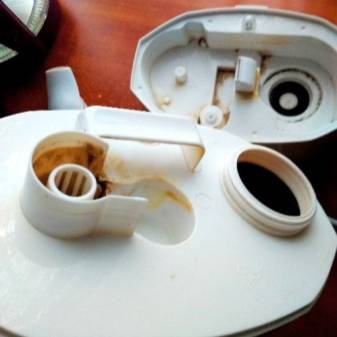
Why is such a neighborhood dangerous? First of all, the development of pulmonary diseases. Mold spores thrown into the air by the device are a strong allergen, especially dangerous for children and the elderly, whose immune protection is less perfect. It is worth considering that the blooming of water is a direct consequence of poor maintenance of the device. If the interior of the tank is cleaned regularly, it will provide exceptional health benefits.
A humidifier in a home can become dirty not only inside but also outside. If fingerprints are left on the case or a greasy coating forms, this can also pose a danger to the device itself and to the health of others. External cleaning must be carried out simultaneously with the removal of plaque inside the container. In addition, it will be useful to remove dust from the surface of the device during normal cleaning.
Disinfection
Clogging of the internal elements of the device creates a favorable environment for the development of microorganisms, bacteria and mold. This situation poses a significant threat, since the entire "content" of the device is sprayed into the room, after which microorganisms enter our body with respiration. This can lead to the development of dangerous diseases.
Therefore, it is important to thoroughly disinfect
To remove microorganisms, bacteria and mold, the device must be disinfected. For this, an aqueous solution of chlorine is used. It is effective to use any bleach as chlorine-containing products. A chlorine solution (water and one teaspoon of bleach) is poured into the device. The solution is left for 60 minutes. After exposure to a chlorine solution, all parts of the device should be rinsed several times with clean water until the characteristic smell of chlorine disappears.

Hydrogen peroxide is an effective alternative to chlorine
An alternative to chlorine solution is hydrogen peroxide. To prepare a solution in 4 liters of water, add ½ glass of hydrogen peroxide. The prepared solution is poured into the tank and the humidifier is turned on. After 2-3 minutes of operation, the device turns off and the solution is drained from it.
The humidifier is thoroughly rinsed with clean water. Water is poured into the container, the humidifier is turned on for a few minutes. After that, you need to wash the device again. The procedure is carried out in a room with open windows or with the included air conditioner. Disinfection is recommended at least once a month.
How to remove fungus in a humidifier and clean parts from mold.Removing mold that has formed on the walls in the water tank can become a big problem if this part of the device is not removed from the device. How to clean an ultrasonic humidifier in this case? For this, conventional chlorine and hydrogen peroxide solutions are suitable. For 12-24 hours of settling in the container, they will remove all the mold. If possible, brush the inner walls with a brush.
Making a descaler at home
Regular use of the unit requires systematic cleaning. Once every 7-9 days, it is disassembled, wiped, washed, dried at room temperature in a dark, dry place. Chemical cleaning agents in the process of operation of the humidifier emit a harmful composition that adversely affects people.
Salt and water
Water (1 l) is mixed with salt (2 tbsp. L.), Stirred, poured into a water tank. Soaking takes 2-3 hours. If necessary, the procedure is repeated, possibly soaking throughout the day. The saline solution is drained from the vessel, rinsed under the tap.
Lemon acid
Hot boiled water (1 l) is mixed with citric acid (2 tbsp. L.), Dissolved. The solution is poured into the tank and left for 12 hours. At the end of the time, the liquid is drained, the unit is washed, dried.
Table vinegar
Cleaning the tank with table vinegar has the following benefits:
- has antimicrobial, antifungal effects;
- suitable for gentle, gentle removal of mineral deposits;
- suitable for processing climatic equipment of any kind;
- increases the life of the unit.
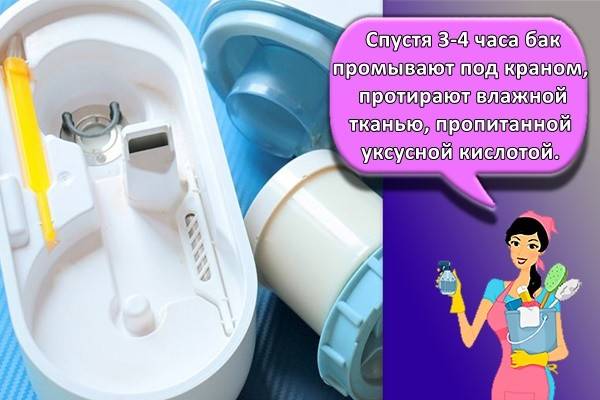
Vinegar (50 ml) is mixed with water (1 l), poured into the structure. After 3-4 hours, the tank is washed under a tap, wiped with a damp cloth soaked in acetic acid.
Features of care and methods of cleaning
To prolong the life of the air humidifier, it should be cleaned regularly. Otherwise, over time, the device will begin to perform its functions worse until it completely fails.
Prepare the device before cleaning. To do this, disconnect it from the power supply and then drain the water. Then rinse the device under running water. It is recommended to wash with a soft sponge, then wipe dry with a napkin. Do not rub hard, as this can damage the structural elements.
We clean the scale
Most often, people have a question about how to descale a humidifier. Cleansing can be done with special substances or home remedies. Limescale can be easily removed in the following ways:
- Pour 1 liter of water into the device, add 2 tsp. soda. Shake slightly, then turn on the humidifier and leave it on for an hour. The scale will come off the walls of the appliance. To finally get rid of it, you just need to rinse the container under running water.
- Dissolve 1 sachet of citric acid in 1 liter of water, pour into a humidifier and turn it on for an hour. It is advisable to take it out to the balcony, since acid will be contained in the evaporating particles of steam.
- Pour 100 ml of vinegar into 1 liter of water. Add the resulting tool to the device and turn it on for an hour.
After the performed manipulations, it is necessary to pour clean water into the humidifier and turn it on for 10 minutes. Then rinse under running water and wipe dry with a soft cloth.
Getting rid of mold
There are a variety of methods you can use to remove mold from your humidifier. Citric acid, vinegar, soda, hydrogen peroxide do well with it. Under their influence, the fungus dies. Use in the same way as for descaling
Cleaning agents should be used with care, observing all proportions.
You can also remove mold with an ENT solution. But it must be used correctly - take no more than 1 tsp for 4 liters of water. chlorine. Pour the resulting humidifier cleaner into the reservoir, turn it on and leave to run for an hour.Then drain, rinse thoroughly with water so that there is no strong smell of chlorine.
Disinfection
In addition to the use of cleaning agents for the humidifier, it is also necessary to disinfect it. During cold weather it is recommended to do it once a week, and in summer - once every 2 weeks, otherwise mold may form on the surface of the device.
Disinfection is performed as follows:
- The device is cleaned using one of the previously described methods.
- Add 1 tsp. disinfectant (usually chlorine or hydrogen peroxide), pour a liter of water and leave for 2 hours.
- Drain the product, fill the humidifier with clean water.
- Connect the device to the network, leave for a couple of minutes until it starts to emit steam.
- Then drain the liquid and rinse the device thoroughly under running water.
- Repeat the procedure until the disinfectant smell disappears.
 Disinfection of the humidifier
Disinfection of the humidifier
It is recommended to carry out disinfection outdoors. After all, the agents used are toxic, so it is not recommended to inhale them.
Disinfection should be done regularly to prevent mold. It has a negative effect on the human body, and especially on the respiratory system. Therefore, it should not be allowed to appear.
Cleaning options
From limescale
Scale can be removed with anticalcum
To clean the contaminated device from scale, you will need to remove the water container from it, first disconnecting other structural elements. Remove completely fresh plaque with a soft cloth without the use of special compounds. It is recommended to clean the housing in hard-to-reach places using a soft-bristled toothbrush. If a thick layer of plaque is found, you will need to use a special descaler.
Before pouring the cleaning composition into the vessel, the remaining water is completely drained from it, after which the following sequential operations are carried out:
- The container is rinsed under a tap with warm water.
- The inner and outer parts of the case are wiped with a soft cloth dipped in a mild vinegar solution.
- The device is left to dry for a while.
If the cleaning procedure is carried out in full accordance with the instructions given, the device will serve its owner for a long time.
Mold can be removed by whiteness or hydrogen peroxide
At the end of these operations, all accessible places are cleaned with a not very hard brush or sponge. After that, the air humidifier must be rinsed with water from the kitchen tap, and then dried with ventilation.
To care for ultrasonic devices, a solution is used made from a mixture of vinegar and water with the addition of soda or citric acid. It is not allowed to wash them with aggressive compounds such as hydrogen peroxide, as this often leads to their premature wear. When using them, chemicals may get into the water sprayed by the device itself. If you do not wash it thoroughly, the tenants may develop signs of malaise (severe headaches or exacerbation of allergies).
Citric acid, baking soda and vinegar are mixed to clean ultrasonic humidifiers
Unlike a conventional device, there is no need to turn on the ultrasound device before cleaning it. The solution prepared according to the recipe is poured into a container of the device disconnected from the mains and left to soften the scale for about 12 hours. Further actions:
- drain the spent mixture and rinse the reservoir of the device under running water;
- pour clean (filtered) water into the tank and connect the humidifier to the mains;
- as soon as steam appears above the evaporator, disconnect the device from the supply line;
- drain the waste liquid, rinse the tank thoroughly, then fill it with fresh water and turn on the device again.
Citric acid is most commonly used to remove plaque that is not very thick.In this case, to clean the humidifier, you will need to fill its container with water and fill it with about 60 grams of the product, and then turn on the device for one hour. Hard plaque softens and gradually falls off the surfaces of the container.
1 Types of humidifiers
There are 4 types of devices in total:
- ultrasonic;
- mechanical;
- combined;
- steam.
Ultrasound - one of the most popular models that require regular maintenance
When cleaning them, pay special attention to the membrane.
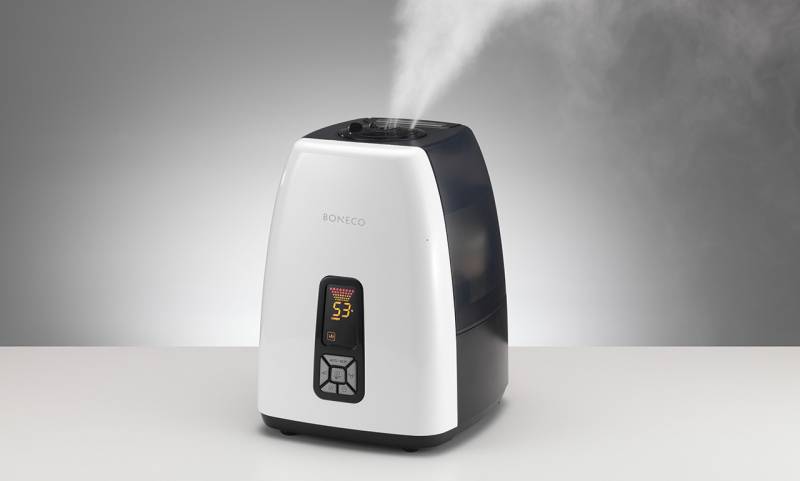
Boneco Ultrasonic Humidifier
Mechanical devices are simple devices that are less popular due to the noise generated and low efficiency. Caring for them involves the constant replacement of cartridges and systematic cleaning of the container with water.
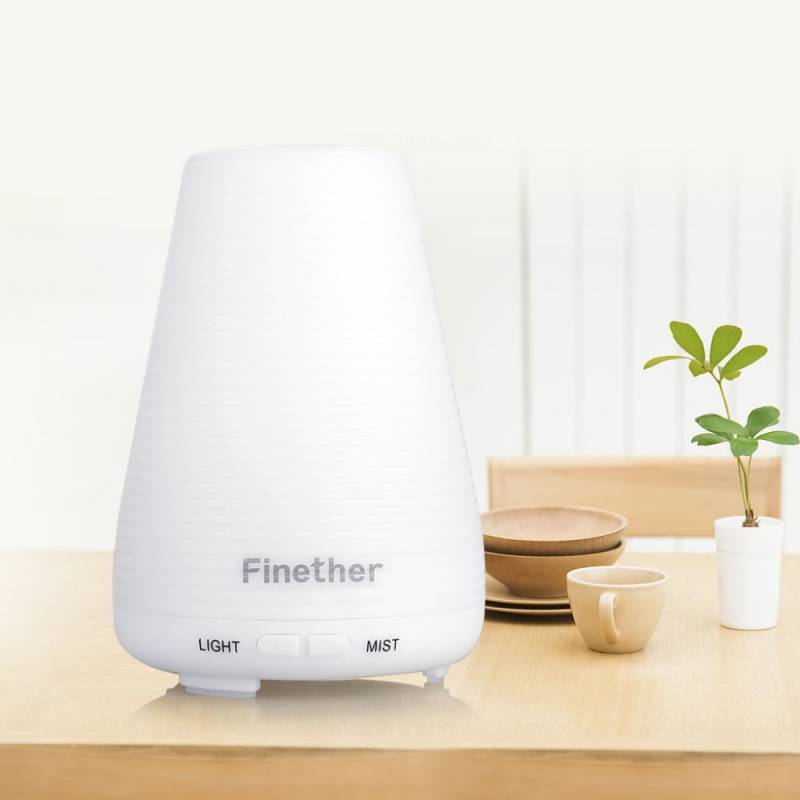
Finether - mechanical aromatherapy humidifier
Combined humidifiers are rather difficult to clean and have a number of advantages over other types of devices. The maintenance problem arises due to the increased formation of dust and scale in the device.
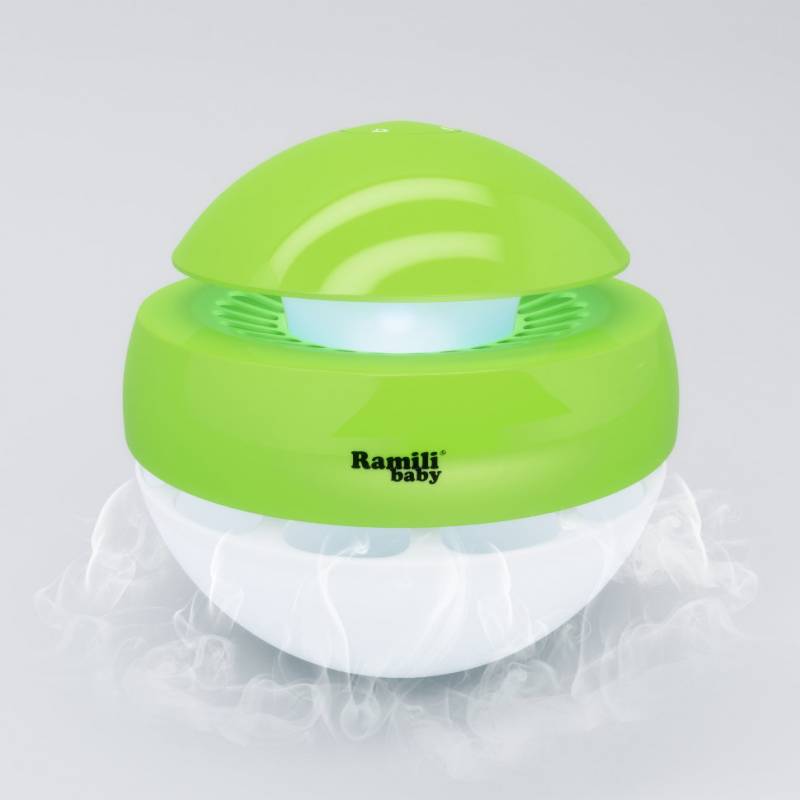
Combined air humidifier Ramili Baby
Steam - on this type of device the most scale settles. Such appliances operate on steam, which makes them look like an electric kettle, including how to care for the unit.
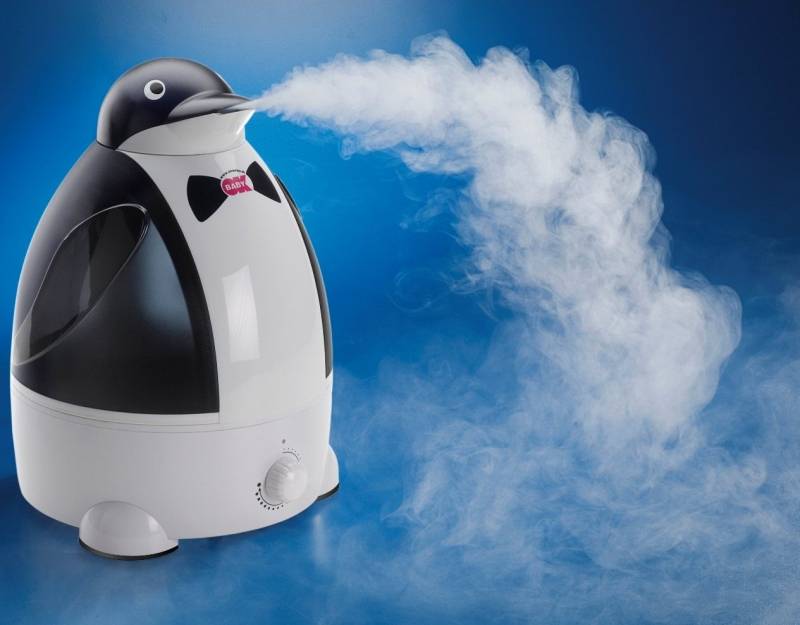
Steam humidifier
Moreover, each of the types of humidifiers is prone to blooming water, up to a change in its properties. The reason for this is pauses in the work of the device. To eliminate flowering, disinfection is carried out. Basically, for cleaning and preventing air humidifiers, solutions are used that have a characteristic pungent odor, therefore, it is recommended to carry out procedures outdoors, but not indoors.
Devices also differ in what harmful substances settle in them. Because of them, problems may arise during the operation of the units:
- the formation of deposits (scale or salt) reduces the performance of the humidifier;
- the appearance of microorganisms, mold on water, harmful chemicals, etc. can pose a danger to human health.
Features of pollution
You can use vinegar and plain water to clean the walls of the humidifier.
The main reason for the formation of plaque on the walls and structural elements of the device is pouring too hard water into it, the content of mineral salts in which exceeds the norm. Deposits that have accumulated over time cannot be removed with a dry cloth. You will need effective cleaning products commonly used at home:
- baking soda;
- vinegar solution;
- lemon acid;
- typical bleach.
The device can become dirty for several reasons. Tap water is very hard, it contains calcium and magnesium salts, which provoke the formation of limescale inside the humidifier, and during its operation they spread through the air in the apartment. Getting rid of this plaque is very difficult. Also, this water may contain harmful microorganisms, which not only contribute to the formation of mold, but also enter the respiratory tract of the owners of the house during the operation of the device.
Cleaning your humidifier is easy
Scale forms during operation, which can damage the device.
Depending on the type of air humidifier, the following types of blockages are distinguished:
- Steam humidifier. When the temperature of the liquid reaches its maximum and turns into a vapor state, salt compounds and minerals turn into a lime film with a dense structure. The danger of a mud layer lies in the malfunction of the device, which over time will stop heating the steam.
- Mechanical fixture. Water, flowing through the filter, leaves salt particles on the walls, which leads to a deterioration in the filtering ability of the device. A humid environment contributes to an increase in the number of pathogenic microorganisms that provoke a putrid odor.
- Ultrasonic device. The liquid breaks down into high humidity dust particles that concentrate on the humidifier.
Cleaning
How often and what is required for this?
First of all, read the instructions. Use water, rag, brush, detergent, vinegar solution, or hydrogen peroxide to clean.
Get in the habit of cleaning your humidifier every day. During the day, dirt accumulates on it, this contributes to the multiplication of bacteria.
Care and disinfection rules:
- Unplug the appliance before cleaning.
- Empty the water tank.
- Use a brush and soapy water to remove any deposits from the inside of the ionizer.
- Rinse the container from the detergent under the tap without flooding the device mechanism.
- Wipe the humidifier with a dry cloth.
- Pour fresh water into the reservoir.
Thoroughly clean the device every three days. Follow the principle of daily cleaning:
- Empty the reservoir.
- Rinse the container with water.
- Soak a rag in the vinegar solution and wipe down the reservoir. This removes mineral deposits.
- Rinse the device thoroughly under water and wipe dry.
Disinfect the humidifier every five days. This will prevent the growth of fungus and other microorganisms.
Disinfect the humidifier in a well ventilated area:
- Prepare a solution of half a glass of hydrogen peroxide in 4 liters of water.
- Pour the agent into the reservoir.
- Switch the machine on and off when par.
- Drain off the solution after 2 minutes.
- Wash the container and fill with fresh water.
- Switch on the appliance for three minutes and drain the water again.
- Rinse and dry the reservoir.
Treat not only the tank with solutions, but also the nozzles.
Cleaning methods
In order to properly clean your humidifier at home, it is enough to follow simple and clear instructions. It is imperative to remember that all manipulations are performed only when the device is disconnected from the mains. It is also imperative to wait until the water in the reservoir of the steam model has cooled down to avoid getting burned. When descaling, the procedure is as follows:
- the device is de-energized, the tank is dismantled, freed from the liquid inside it;
- mechanical cleaning of the walls of the container is carried out using a soft cloth dipped in soapy water; it is prepared from 100 g of grated laundry soap and 200 ml of warm water, thoroughly mixed by shaking;
- the container is wiped on the outside and inside; for hard-to-reach places, brushing with a soft bristle toothbrush is well suited; strong pressure is not needed; to improve the quality of cleaning, the brush is also moistened in soapy water;
- the nozzle is being cleaned - an vinegar solution is used (the ratio of essence and water is 1: 1); it is applied to a soft cloth, you need to wipe off dirt and scale until a satisfactory result is obtained;
- rinsing is performed - all parts of the humidifier are rinsed with clean distilled or running water;
- drying is in progress - first the parts remain on the dryer, then they are thoroughly wiped off with a soft towel; Drying with a hairdryer or using other heating methods is not recommended.
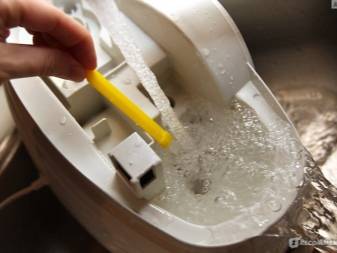
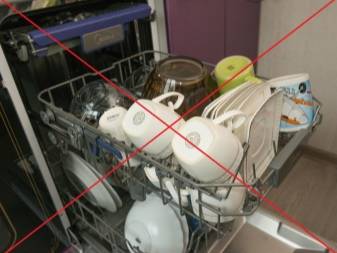
You can descale a humidifier with citric acid. For this, a solution is prepared in a concentration of 50 g of dry powder per 1 liter of water in order to achieve complete dissolution of the ingredients. Then the solution is added to the tank, the device starts up for 1 hour of operation. After that, the reservoir is freed from the liquid, all the structural elements of the device are rinsed.
Mold disinfection is done by several means.
- Vinegar. The essence in a volume of 200 ml is dissolved in 4.5 liters of water, after which the steam apparatus is filled with this mixture and left in working condition for 60 minutes. Ultrasonic types of equipment are cleaned in a de-energized state. The room is well ventilated during processing. Then the mixture is drained, the tank is thoroughly rinsed.
- Hydrogen peroxide.In this case, 2 glasses (500 ml) of hydrogen peroxide in pharmacy concentration are poured into the reservoir removed from the device. The exposure time is 1 hour. Make sure that the agent is in contact with the walls and bottom of the container.
- Chlorine solution - 1 tsp. whiteness is diluted with 4.5 liters of water, the mixture is shaken, poured into the container. The duration of the disinfection process is 60 minutes, then the liquid is drained. Before installation in the device, the reservoir is thoroughly rinsed with water and dried.
What can not be used to wash a humidifier? Any chemicals with an aggressive acidic or degreasing composition are definitely not suitable for use. Liquid for washing dishes, toilets, sinks, freeing from clogging, should be excluded from the list of caring components. Instead of cleaning, they will simply damage the device.
Getting rid of plaque
The layer of hardened salts must not be removed mechanically. You will need soda, citric acid or vinegar, which reacts with harmful impurities and softens plaque. The component is diluted with water until completely dissolved and the resulting mixture is poured into the tank. For a liter of liquid, you will need 2 tablespoons of soda, or 100 g of citric acid or 150 ml of vinegar. Use only one of the listed ingredients. You cannot combine soda with vinegar, because the substances neutralize each other, and the plaque remains on the walls of the humidifier.
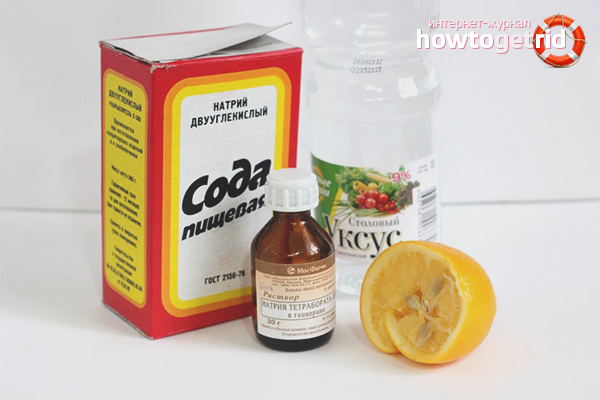
Take the device to the balcony or turn it with its spout towards the open window so that the sprayed liquid goes out into the street. Connect to the power supply and turn on for 30-60 minutes, pouring the solution into the tank. Water with soda or citric acid will corrode scale as it is sprayed, therefore, at the end of the procedure, the plaque will fall off the walls of the apparatus on its own. It is necessary to carefully peel off the exfoliated pieces, and then rinse the tank under the tap. Rinse with clean water until the specific odor disappears.
Important: Ultrasonic and mechanical varieties do not include, but simply pour the solution into the tank and forget about the device for 12 hours. Pour the liquid with pieces of scale into the sink, and rinse the tank and nozzle, and you can use the humidifier as usual
Humidifier design and general care information
Let us consider the constituent elements using the example of the most common type of climatic devices operating on the principle of generating ultrasonic waves.
The ultrasonic humidifier has the following device:
- Plastic case.
- Water filling tank.
- Replaceable filter cartridge.
- Thermal tube for heating the liquid, connecting the water tank and the ultrasound chamber.
- Fan.
- Membrane that creates ultrasonic waves.
- Steam generation chamber with UV treatment.
- Steam spray.
- Power supply and control panel.
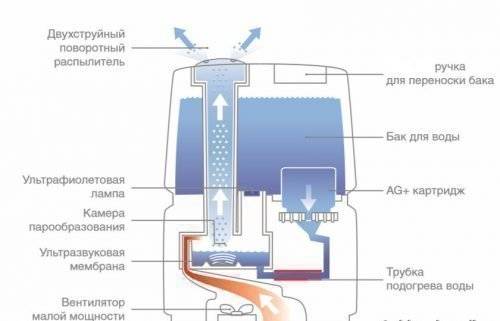
Humidifier device
Almost all parts of the humidifier, except for the fan, power supply and control panel, are in contact with water during humidification. For this reason, the technical instructions for each humidifier have specific water requirements.
Ordinary water contains the following elements:
- iron;
- calcium and magnesium salts;
- manganese;
- fluorides, sulfides, chlorides;
- organic compounds, bacteria and microorganisms.
It is recommended to use different water for different models of humidifiers. The exact data should be seen in the instructions. Distilled or filtered water will most often work. Less commonly, it is recommended to use demineralized liquid with removed salts. The use of the "correct" water will significantly reduce the formation of scale and plaque.
Improper operation of the humidifier without periodic cleaning and maintenance will lead to the following consequences: the formation of solid deposits on the inner walls and parts of the device; reproduction of pathogenic microorganisms, bacteria, mold.All of the above has an incomparably significant effect on the performance of the device, its serviceability and durability.
Care for the humidifier should be done using the following measures:
- Cleaning and rinsing from mineral deposits and scale.
- Disinfection.
- Preventive dust removal.
- Timely replacement of filters.

